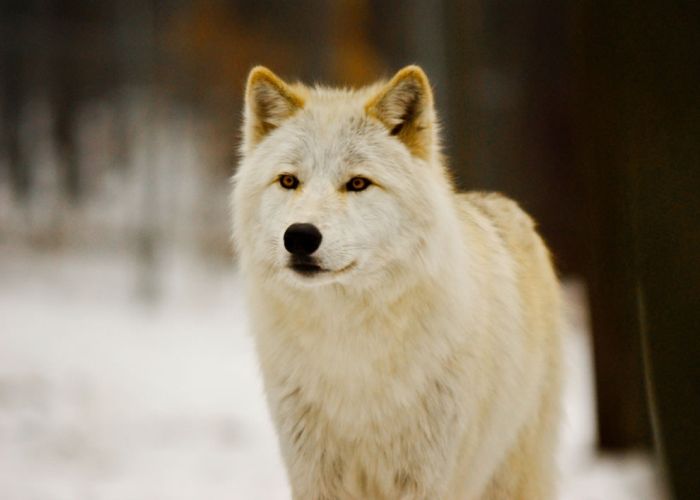|
|
Gray Wolf
|
Livestock and dog predation
Livestock depredation has been one of the primary reasons for hunting wolves, and can pose a severe problem for wolf conservation. As well as causing economic losses, the threat of wolf predation causes great stress on livestock producers, and no foolproof solution of preventing such attacks short of exterminating wolves has been found. Wolves typically resort to attacking livestock when wild prey is depleted: in Eurasia, a large part of the diet of some wolf populations consists of livestock, while such incidences are rare in North America, where healthy populations of wild prey have been largely restored. However, certain wolves may become "addicted" to livestock, as the stomach lining of domestic ungulates has a higher fat content than that of wild herbivores. The majority of losses occur during the summer grazing period. Untended livestock in remote pastures are the most vulnerable to wolf predation. Some nations help offset economic losses to wolves through compensation programmes or state insurance. Sheep are the most commonly taken livestock species in Europe, domestic reindeer in northern Scandinavia, cattle and turkeys in North America, goats in India and horses in Mongolia. As wolves tend to attack large prey from behind, cattle may be more vulnerable to wolves than horses because the latter are better able to defend their hind quarters with powerful kicks. Different subspecies of wolf may preferentially target different animals: small bodied wolves rarely molest adult cattle, while large northern wolves are able to kill fully grown steers and sometimes horses unaided. The number of animals killed in single attacks varies according to species: most attacks on cattle and horses result in one death, while turkeys, sheep and domestic reindeer may be killed in surplus. Wolves mainly attack livestock when the animals are grazing, though they will occasionally break into fenced enclosures. Injuries caused by wolves on large bodied livestock include docked ears and tails, as well as slash wounds on the lower legs. In some cases, wolves do not need to physically attack livestock in order to negatively affect them; the stress livestock experiences in being vigilant for wolves may result in miscarriages, decreased weight gain, and a decrease in meat quality.
Wolves will kill dogs on occasion, with some wolf populations relying on dogs as an important food source. Wolves generally outmatch dogs, even large ones, in physical confrontations, because of their larger heads and teeth and stronger bites. Also, the fighting styles of wolves and dogs differ significantly; while dogs typically limit themselves to attacking the head, neck and shoulder, wolves will make greater use of body blocks, and attack the extremities of their opponents. In Croatia, wolves kill more dogs than sheep, and wolves in Russia appear to limit stray dog populations. Wolves may display unusually bold behaviour when attacking dogs accompanied by people, sometimes ignoring nearby humans. Wolf attacks on dogs may occur both in house yards and in forests. On village outskirts, wolves may set up ambushes for dogs, with one wolf soliciting the dog to follow it and lead it to another wolf. In some areas, livestock guardian dogs are fitted with wolf collars in order to protect themselves from wolf attacks. Wolves however may learn to avoid the spiked collars just as they do the antlers of ungulate prey, and still kill guard dogs. Wolf attacks on hunting dogs are considered a major problem in Scandinavia and Wisconsin. The most frequently killed hunting breeds in Scandinavia are harriers, with older animals being most at risk, likely because they are less timid than younger animals, and react differently to the presence of wolves. Wolf-caused injuries on dogs are often located on the back, thighs and hind legs. The fatal wound is mostly a bite to the back of the neck. Large hunting dogs such as Swedish elkhounds are more likely to survive wolf attacks due to their better ability to defend themselves.
|
|









